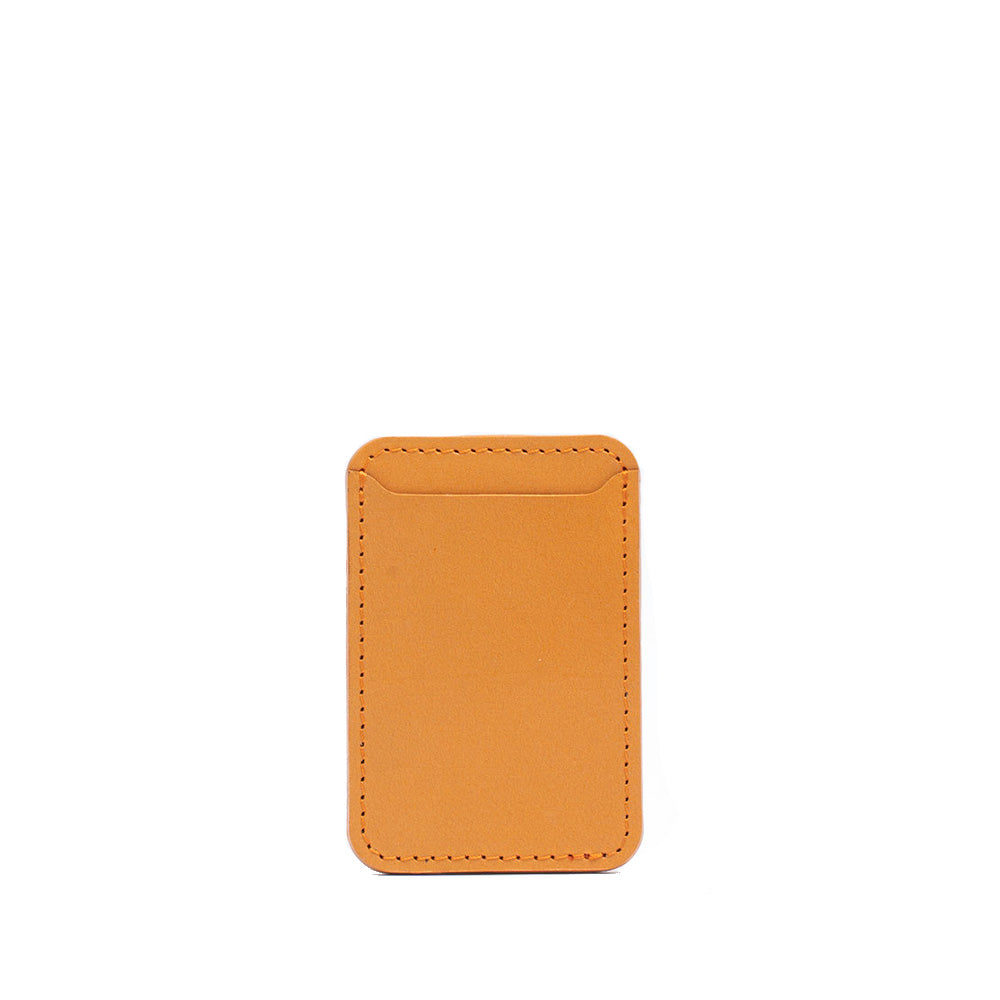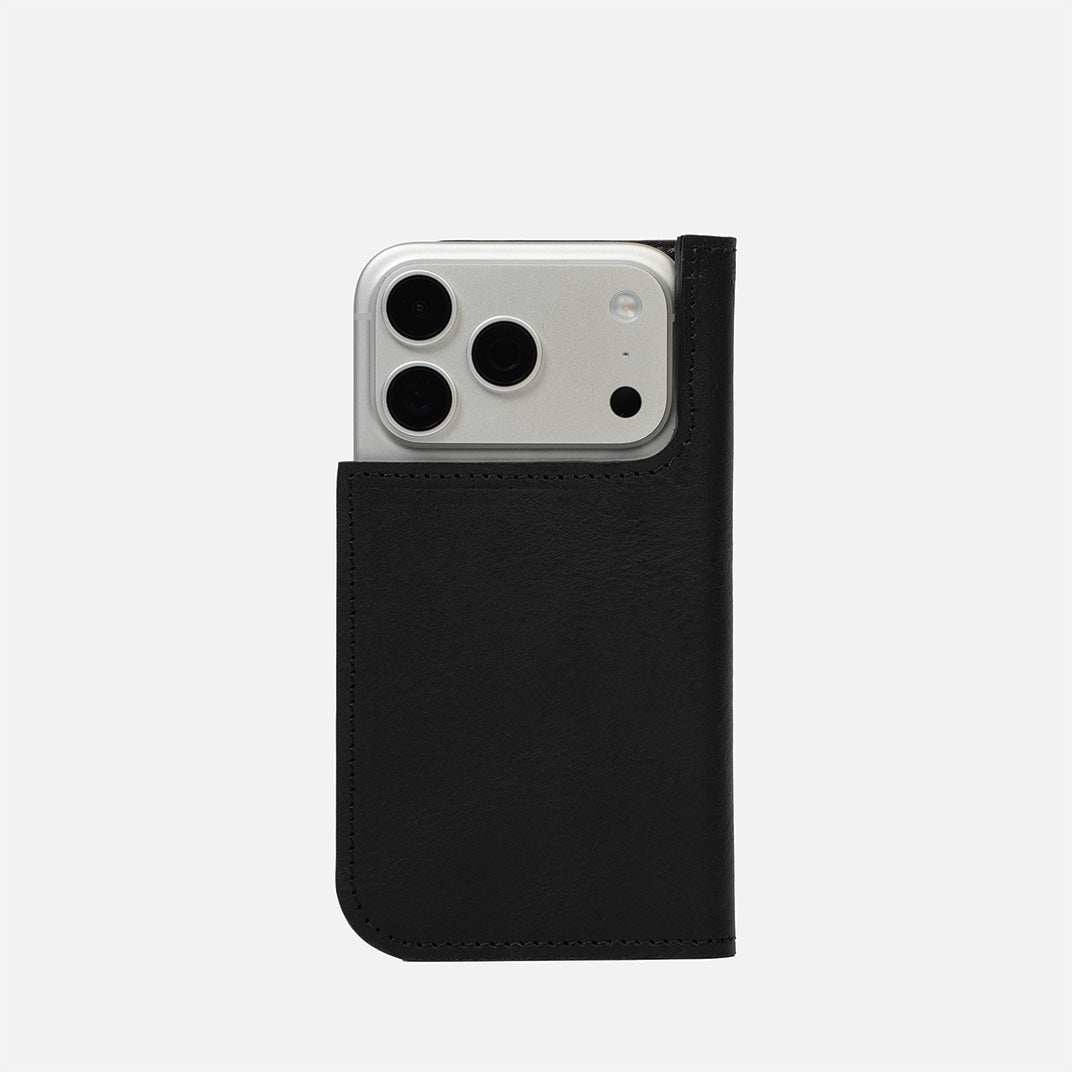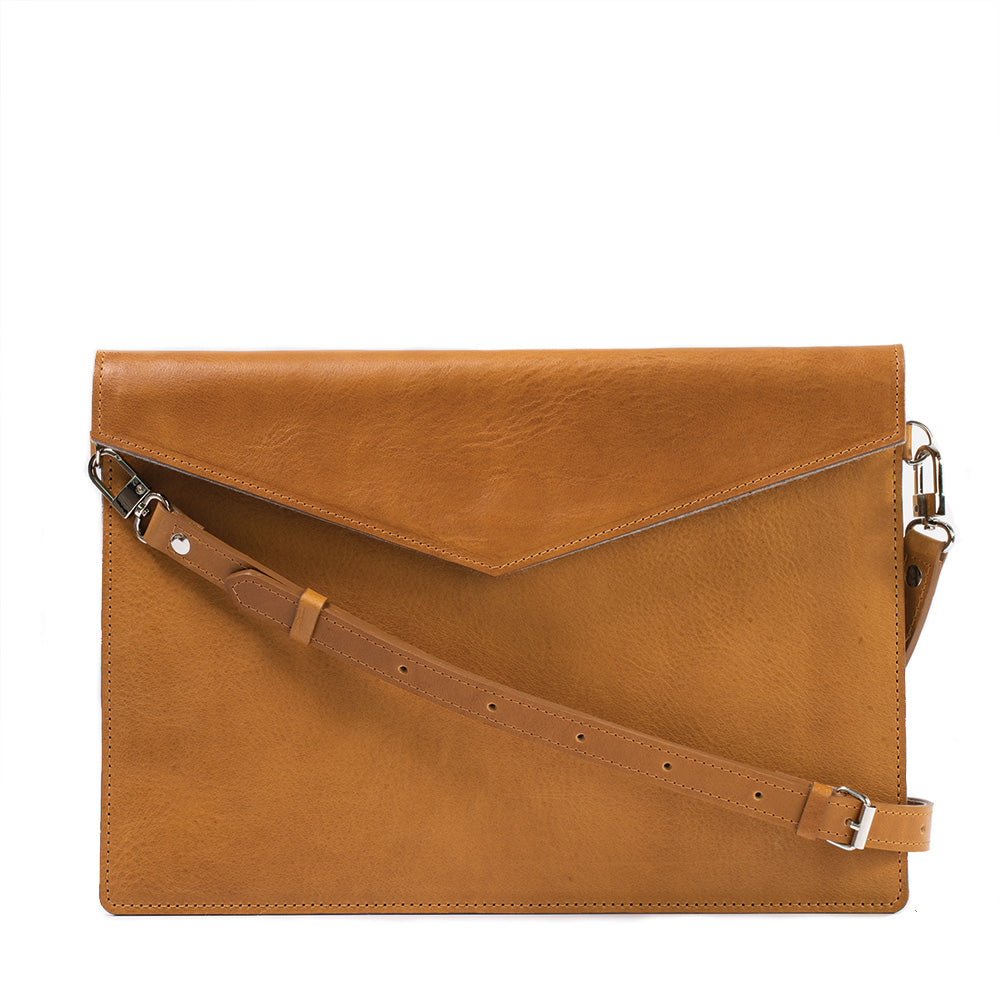
Credit Image: Geometric Goods - Leather sleeve for Apple Pencil 2
Purpose and Functionality
Styluses serve as digital pens for touchscreen devices, offering basic functionality like navigation and simple drawing. The Apple Pencil, designed specifically for iPads, takes this further with advanced features such as pressure sensitivity, tilt detection, and palm rejection. This makes it ideal for precision tasks like detailed drawing and handwriting.
Usage Context
Regular styluses are versatile, suitable for general touchscreen use across various devices. The Apple Pencil, however, is tailored for iPad users requiring high precision, like in graphic design or advanced note-taking. Its integration with iPadOS allows for seamless use with numerous applications, catering to professional and creative needs.
Design and Build Quality
Comparison of Design Elements
The Apple Pencil showcases a minimalist and sleek design, aligning with Apple's typical aesthetic. Its cylindrical shape, balanced weight, and matte finish provide a comfortable grip akin to a traditional pencil. The second-generation Apple Pencil introduces a flat side for magnetic attachment and charging on the iPad, enhancing functionality and ease of use.
In contrast, general styluses come in a variety of shapes and sizes, ranging from thin, pen-like designs to thicker, more ergonomic forms. Many styluses feature a rubber or plastic tip, while higher-end models might include finer points for more precise interaction. Some are equipped with clips for portability, and others might have buttons for additional functionalities, like right-click or erase.
Build Quality, Materials, and Durability
The Apple Pencil is constructed with high-quality materials, ensuring durability and a premium feel. Its plastic composition is robust, designed to withstand regular use, though it can be susceptible to damage from drops or intense pressure. The tips are replaceable, catering to wear over time.
Comparatively, the build quality of other styluses varies widely based on the brand and price range. Lower-end styluses might use basic plastics and rubbers, offering less durability. Mid-range to high-end models often employ better materials, like aluminum or specialized composites, providing greater resilience and a more premium feel. Like the Apple Pencil, many active styluses have replaceable tips to maintain their precision over time.
In summary, while the Apple Pencil is designed with a focus on simplicity, elegance, and functionality specifically for iPad users, other styluses offer a broader range of designs and materials, catering to different tastes and requirements. The choice between them depends on the user's device, usage needs, and personal preference for design and build quality.
Compatibility
Apple Pencil Compatibility with iPad Models
The Apple Pencil is designed exclusively for use with certain iPad models, and its compatibility is divided across its two generations.
First-Generation Apple Pencil
Compatible with iPad (6th, 7th, and 8th generations), iPad Air (3rd generation), iPad mini (5th generation), and iPad Pro 12.9-inch (1st and 2nd generations), iPad Pro 10.5-inch, and iPad Pro 9.7-inch.
Second-Generation Apple Pencil
Works with iPad Air (4th generation and later), iPad Pro 12.9-inch (3rd generation and later), and iPad Pro 11-inch (1st generation and later). This version integrates more advanced features like magnetic attachment and charging, and gesture controls.
It's important to note that the compatibility of the Apple Pencil is limited to the iPad line and does not extend to iPhones or other Apple devices.
Compatibility of Various Styluses with Different Devices
In contrast to the Apple Pencil, general styluses offer a wider range of compatibility.
Passive (Capacitive) Styluses
These styluses work with any touchscreen device that responds to finger touch. This includes most smartphones, tablets, and even some touch-enabled laptops, regardless of the operating system or brand.
Active Styluses
These are more advanced and often designed for specific device families or models. For example, some active styluses are compatible with a range of Samsung tablets and smartphones, while others might be designed for Windows-based tablets and 2-in-1 laptops. Active styluses usually require a Bluetooth connection and may offer features like pressure sensitivity and palm rejection, but their compatibility is more limited compared to passive styluses.
Brand-Specific Styluses
Some manufacturers produce styluses specifically designed for their devices. These styluses often have functionalities and features optimized for the particular brand's touchscreens and software, much like the Apple Pencil with iPads.
In summary, while the Apple Pencil offers high-end features optimized for specific iPad models, other styluses cater to a broader range of devices, with varying degrees of functionality and sophistication. Users need to choose a stylus based on the device they intend to use it with, considering the level of compatibility and the features they require.
Features
Unique Features of the Apple Pencil
The Apple Pencil is known for its advanced and unique features that enhance the user experience, particularly for creative and professional work.
- Pressure Sensitivity: One of the most notable features, pressure sensitivity allows for variation in line thickness and opacity, depending on how hard the user presses the pencil on the screen. This feature is crucial for artists and designers for creating detailed and nuanced artwork.
- Tilt Control: The Apple Pencil can detect the angle at which it's being held, allowing for shading effects similar to a traditional pencil. This adds to the natural drawing experience, providing more control and versatility in sketching and illustrating.
- Gesture Buttons (Second-Generation Apple Pencil only): The newer version of the Apple Pencil includes a touch-sensitive area that supports gesture controls. Users can double-tap to switch between tools in certain apps, enhancing efficiency and workflow.
Features of General Styluses
General styluses vary significantly in terms of features, depending on their design and target market.
- Pressure Sensitivity: Higher-end active styluses may offer pressure sensitivity, though typically not to the same degree as the Apple Pencil. This feature is more common in styluses designed for drawing and professional work on tablets.
- Precision: While the Apple Pencil is engineered for pixel-perfect precision, other styluses may have a slight parallax effect or less accuracy. However, advanced styluses from brands like Wacom, Adonit, and Logitech are closing this gap, offering higher precision and reduced lag.
- Additional Functionalities: Some active styluses come with additional buttons that can be programmed for specific actions like erasing or right-clicking, which can be particularly useful for note-taking or general navigation.
In summary, the Apple Pencil stands out with its high-end features tailored for the iPad, offering an experience that closely mimics the use of a real pencil. Other styluses, while varying widely in their capabilities, provide functionalities that cater to a range of needs and devices, with some models approaching the level of precision and sophistication of the Apple Pencil.
Connectivity and Ease of Use
Connectivity Options
The Apple Pencil and various styluses offer different modes of connectivity, which significantly influence their usability and compatibility with devices.
Apple Pencil:
- First Generation: Connects via a Lightning connector. Users plug it into the iPad's Lightning port for pairing and charging.
- Second Generation: Features wireless connectivity. It pairs and charges magnetically by attaching to the side of compatible iPad models. This design offers a more streamlined and convenient experience.
- Active Styluses: Often use Bluetooth for connectivity. Pairing usually involves turning on the stylus and selecting it from the Bluetooth menu on the device. Some active styluses also feature USB-C ports for charging.
- Passive Styluses: Do not require any form of electronic connectivity, as they function based on the capacitive touch technology of the screen. They are universally compatible and do not need to be charged.
Ease of Use
Apple Pencil:- Known for its seamless integration with iPadOS, the Apple Pencil offers a straightforward, almost instantaneous pairing process. The second-generation pencil's magnetic attachment feature doubles as a charging and storage solution, making it exceptionally user-friendly.
- The first-generation pencil's Lightning connector-based charging is less convenient, requiring the pencil to be plugged into the iPad.
Other Styluses:
- Active Styluses: The pairing process can vary and might require a few additional steps compared to the Apple Pencil. Regular charging, either via USB or battery replacement, is necessary, which can be a minor inconvenience.
- Passive Styluses: Excel in simplicity as they are ready to use straight out of the box with no pairing or charging required. However, they lack the advanced features of active styluses and the Apple Pencil.
In summary, while the Apple Pencil excels in ease of use with its advanced connectivity and intuitive design, especially in its second-generation iteration, other styluses offer a range of experiences. Active styluses provide advanced features with a slightly more complex connectivity process, whereas passive styluses win on simplicity and universal compatibility.
Battery Life and Charging
Apple Pencil
The Apple Pencil's battery life and charging capabilities are designed to complement the mobility and convenience of iPads.
- First-Generation Apple Pencil: Offers up to 12 hours of battery life. Notably, it has a quick-charge feature where a 15-second charge provides about 30 minutes of use. The pencil charges via a Lightning connector, either by plugging into the iPad or a USB power adapter.
- Second-Generation Apple Pencil: Also provides up to 12 hours of battery life. It introduces a more user-friendly charging method through magnetic attachment to compatible iPads, which charges the pencil wirelessly. This design eliminates the need for external charging cables or adapters.
Various Styluses
The battery life and charging methods for other styluses can vary significantly based on the type and brand.
- Active Styluses: Typically offer between 10 to 20 hours of usage on a full charge, though this can vary. Charging times for these devices range from about 1 to 1.5 hours. Some models feature USB-C charging for convenience, while others may rely on replaceable batteries, like AAA or AAAA, offering extended use times and easy battery replacement.
- Passive Styluses: As they do not have electronic components, passive styluses do not require charging, which can be a significant advantage for users seeking simplicity and uninterrupted usage.
In summary, while the Apple Pencil boasts a respectable battery life with convenient and rapid charging features, especially in its second generation, other active styluses offer similar usage durations with varying charging methods and times. Passive styluses, free from the constraints of battery and charging, provide an ever-ready solution for those who prioritize uninterrupted usage.
Precision and Responsiveness
Apple Pencil
The Apple Pencil is renowned for its high precision and responsiveness, particularly when used with compatible iPad devices.
- Precision: The Apple Pencil's tip is designed to offer pixel-perfect accuracy. This precision is especially evident in tasks that demand fine detail, like drawing, sketching, or writing. The ability of the Apple Pencil to accurately register the smallest of movements translates into a very natural and intuitive user experience.
- Responsiveness: One of the key strengths of the Apple Pencil is its low latency. This means that there is minimal delay between the user moving the pencil and the corresponding movement appearing on the screen. This responsiveness is crucial for a seamless interaction, making the Apple Pencil feel more like a traditional writing or drawing tool.
Comparison with Other Styluses
- Active Styluses: Higher-end active styluses from brands like Wacom or Adonit can come close to the Apple Pencil in terms of precision. They typically offer good responsiveness, though they might not always match the low latency of the Apple Pencil. These styluses are often preferred for professional work on non-iOS devices.
- Passive Styluses: Generally, passive styluses lack the precision and responsiveness of the Apple Pencil. They are more suited for basic navigation and casual use. While they are universally compatible, their broader tips and lack of advanced features like pressure sensitivity limit their precision.
- Brand-Specific Styluses: Some manufacturers produce styluses specifically for their devices, which can offer enhanced precision and responsiveness on those devices. However, they may not provide the same level of performance when used with devices from other manufacturers.
In summary, while the Apple Pencil sets a high standard for precision and responsiveness, especially on iPad devices, other styluses offer varying levels of performance. The choice between them should be based on the specific needs and the devices they will be used with.
Price Comparison
First-Generation Apple Pencil
Typically priced around USD 99. This model is compatible with a broader range of iPads, including older models.
Second-Generation Apple Pencil
Priced higher, usually around USD 129. It offers advanced features like magnetic attachment and wireless charging but is only compatible with the newer iPad models.
Price Range of Other Styluses
Passive Styluses
The most affordable, often priced under USD 20. These are simple, universal tools suitable for basic touchscreen interaction.
Active Styluses
Prices can range widely. Budget-friendly active styluses may be available for around USD 30 to USD 50, while more advanced models from reputable brands like Wacom or Adonit can cost anywhere from USD 60 to over USD 100, depending on their features and compatibility.




